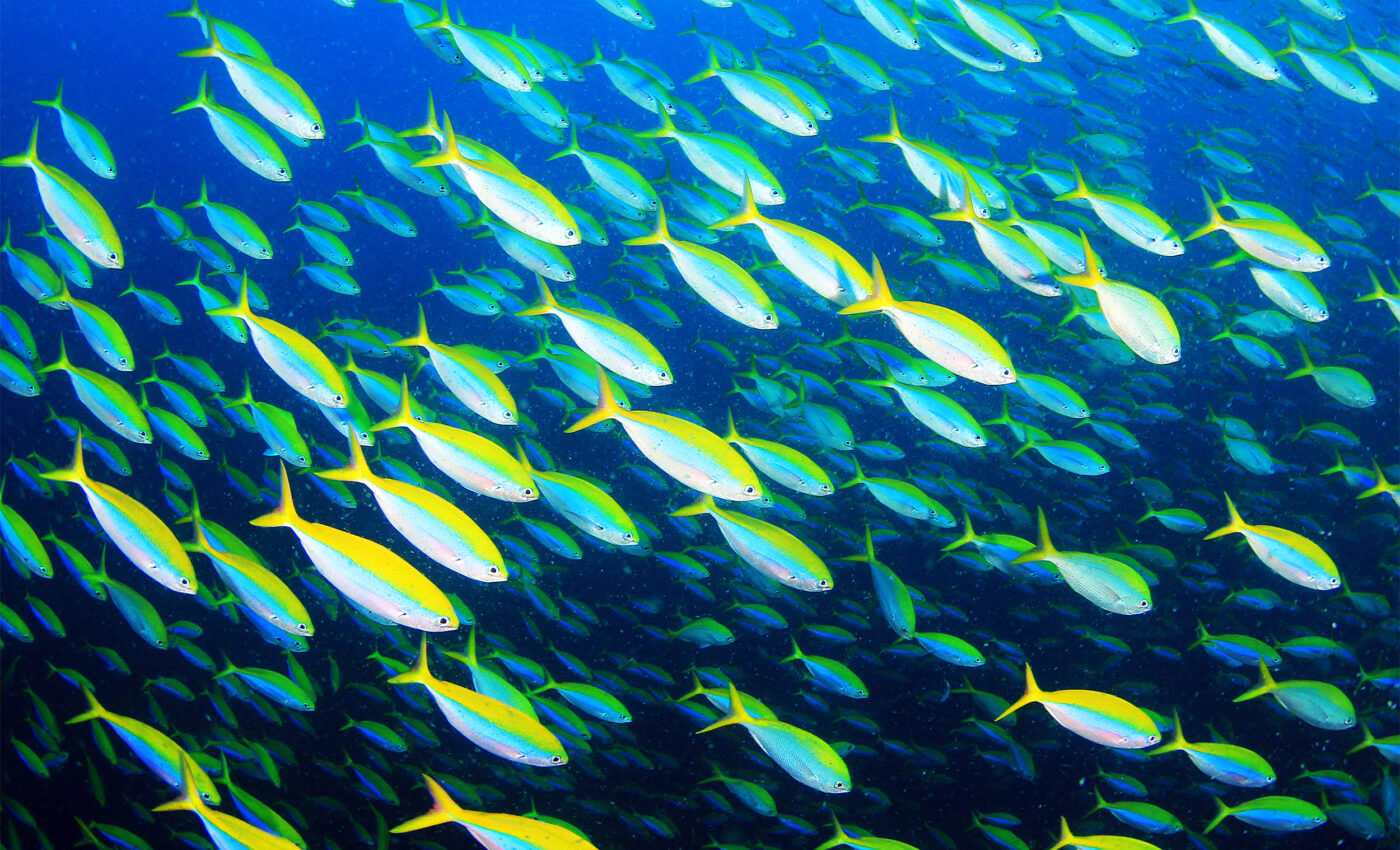
Fish foraging behavior is changing as they adapt to warming waters
In the face of rising ocean temperatures, fish are altering their foraging behavior and prey selection, leading to potentially significant ecological impacts.
A recent study conducted by the German Centre for Integrative Biodiversity Research (iDiv) and Friedrich Schiller University Jena, discovers how these changes could escalate the risk of extinctions within marine ecosystems.
Studying how climate change impacts fish foraging
The research focused on fish in the Baltic Sea, revealing that with temperature increases, fish tend to consume the first prey they encounter, which are usually more abundant but smaller, such as brittle stars, small crustaceans, worms, and mollusks.
This shift towards what is termed “flexible foraging behavior” is driven by the need to meet higher metabolic demands in warmer waters.
While opting for readily available, smaller prey offers a quick energy fix, it falls short of meeting the long-term energy requirements of fish, as larger prey would.
This discrepancy between the fish’s energy needs and their actual intake could, according to model food web calculations, lead to a higher likelihood of extinctions, particularly under warmer conditions.
This effect is pronounced higher up the food chain, suggesting that climate change could make ecosystems more susceptible to disruption.
Unexpected dietary shifts
Benoit Gauzens of iDiv and the University of Jena, the study’s lead author, points out, “It is usually assumed that species will adapt their foraging to maximize energy intake. However, our findings indicate that fish, and potentially other animals, might respond to climate change stress in unexpected and inefficient ways.”
The research team analyzed a decade’s worth of data on the stomach contents of six commercially significant fish species from the Bay of Kiel, covering various feeding strategies.
This analysis, which spanned from 1968 to 1978, revealed a gradual shift in diet from less abundant to more abundant prey as temperatures increased.
Ripple effect: Threat to marine biodiversity
“Fish species in the Baltic Sea and elsewhere are facing a multitude of human-made pressures, like overfishing or pollution”, adds co-author Gregor Kalinkat of the Leibniz Institute of Freshwater Ecology and Inland Fisheries (IGB).
“The effect of more inefficient prey searching behavior under warming might be another, so far overlooked factor leading to fish stocks that cannot recover even when fisheries pressure is significantly reduced.”
The study’s theoretical models, based on mathematical food web calculations, indicate that warming water temperatures lead to changes in foraging behavior that, in turn, increase extinction risks for consumer species, including fish. These extinctions could have cascading effects on other species within the ecosystem.
Gauzens adds a thought-provoking perspective, “Adaptation to local environmental conditions is typically crucial for maintaining biodiversity. Yet, it seems this principle might not hold in the context of rising temperatures.”
Implications of warmer waters and fish foraging
In summary, this important and disturbing study uncovers a critical, yet overlooked aspect of climate change’s impact on marine ecosystems.
By demonstrating how fish in warmer waters shift their dietary preferences towards smaller, more abundant prey, the research highlights a significant behavioral adaptation that could have far-reaching consequences for marine biodiversity and the stability of ecosystems.
This change in foraging behavior, driven by the need to meet increased metabolic demands, threatens the survival of fish species themselves and poses a risk to the broader community of marine organisms.
As such, these findings underscore the urgent need for comprehensive strategies to mitigate climate change effects on marine life, ensuring the resilience of our oceans in the face of environmental shifts.
More about fish foraging
As discussed above, fish foraging involves the various strategies and behaviors fish employ to locate, capture, and consume their food. It’s a fundamental aspect of their existence, crucial for survival, growth, and reproduction.
Strategies and behaviors
Search Tactics
Fish use a range of search tactics to find food. Some species rely on keen eyesight, others on sensitive olfactory cues, and yet others on the detection of vibrations through their lateral lines. Predatory fish might stalk their prey, while others graze continuously on algae or detritus.
Social Foraging
Many fish forage in groups, benefiting from the collective effort. Schooling, for instance, allows fish to cover more area and efficiently locate food sources. This social behavior can also confuse predators, reducing individual risk while feeding.
Seasonal and Diurnal Patterns
Foraging behavior often follows seasonal and diurnal patterns. Some species are diurnal, actively searching for food during the day, while others are nocturnal, exploiting the cover of darkness to surprise their prey. Seasonal migrations to areas abundant in food are common among various fish species.
Adaptations for foraging
Morphological Adaptations
Fish exhibit a wide array of physical adaptations for foraging. The shape of the mouth, teeth, and body can indicate a fish’s preferred diet and foraging style. For instance, bottom feeders might have downward-facing mouths suitable for scavenging, whereas predators have sharp teeth for seizing prey.
Sensory Adaptations
Sensory adaptations play a crucial role in fish foraging. Some species have developed highly sensitive barbels or whiskers to detect prey in murky waters. Others might use electric fields to locate hidden prey. These adaptations enhance their ability to find and capture food in diverse and challenging environments.
Implications and future study
In summary, fish foraging is a complex, dynamic aspect of aquatic life, showcasing the remarkable adaptability of fish.
Through diverse strategies and specialized adaptations, fish have evolved to exploit their environments efficiently.
Understanding these behaviors not only fascinates but also informs conservation efforts, ensuring the survival of fish populations in the face of environmental challenges.
The full study was published in the journal Nature Climate Change.
—–
Like what you read? Subscribe to our newsletter for engaging articles, exclusive content, and the latest updates.
Check us out on EarthSnap, a free app brought to you by Eric Ralls and Earth.com.
—–













